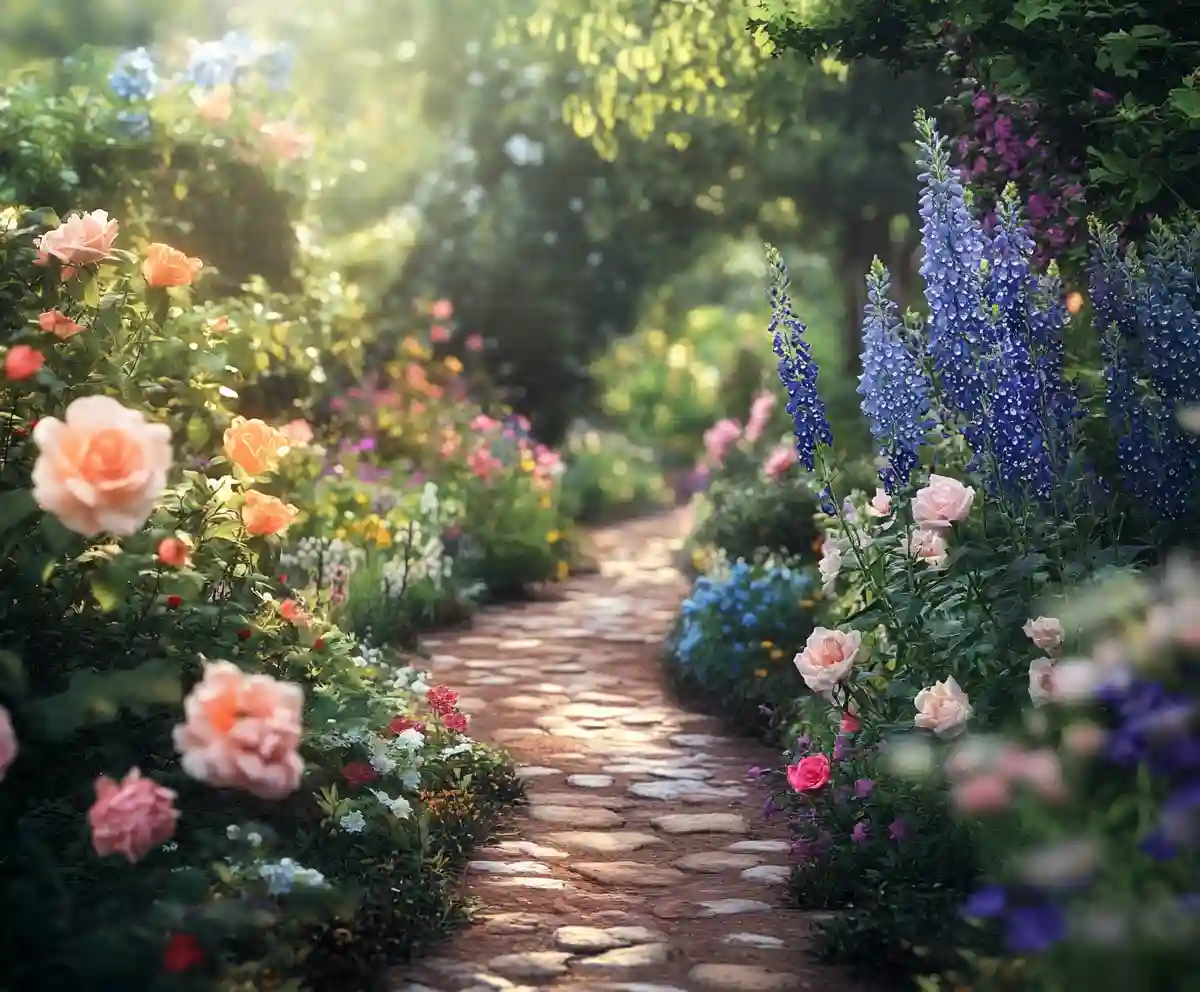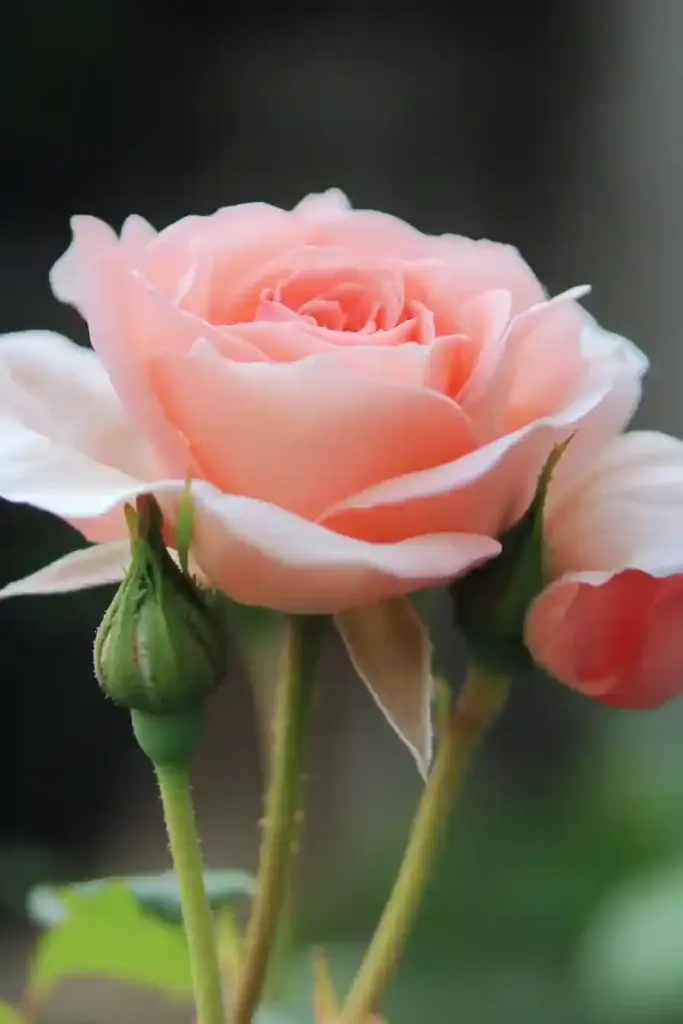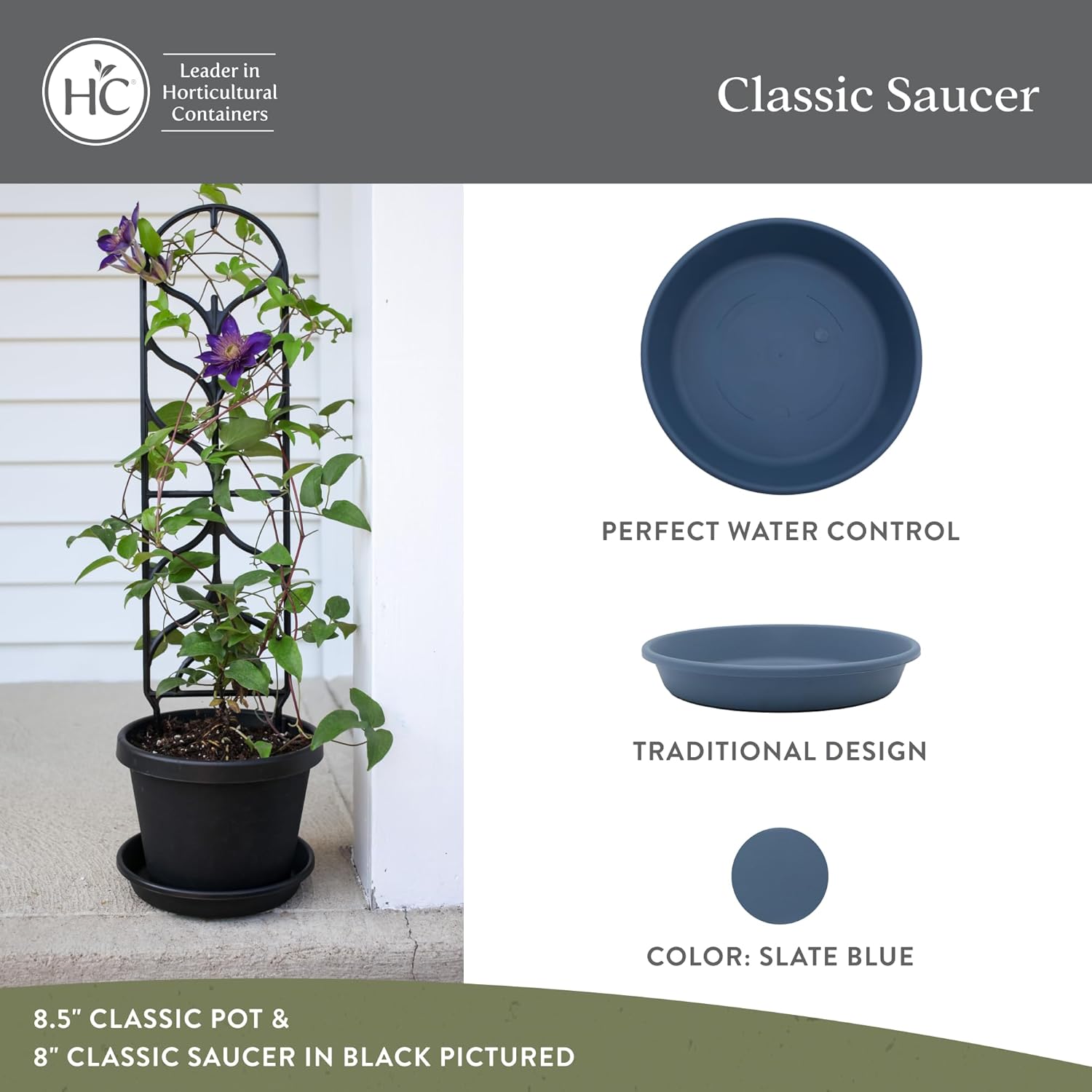If you’re dreaming of a whimsical, romantic garden that looks like it belongs in the English countryside, you’re in luck. Creating an English garden is all about blending texture, color, and fragrance with a relaxed, natural layout. And when it comes to choosing the best flowers for an English garden, the classics never disappoint.
From lush perennials to fragrant annuals, English gardens thrive on variety. These timeless blooms bring pollinators, layered beauty, and just the right touch of cottage-style magic to your landscape. Whether you’re starting from scratch or looking to upgrade your flower beds, these 14 garden favorites will help you build a blooming paradise with ease.
🌹 1. Roses – The Quintessential English Bloom
No English garden is complete without the iconic rose. Loved for their layered petals and rich fragrance, roses come in a wide spectrum of colors—from traditional reds and pinks to delicate whites and buttery yellows. They thrive in full sun and prefer rich, well-drained soil with plenty of organic matter.
To keep roses blooming all season, regular deadheading and seasonal pruning are a must. Look for varieties like David Austin’s English roses for that old-world charm with modern resilience. These romantic blooms are perfect for borders, archways, or even containers.
Quick Care Tips:
- Sunlight: 6+ hours of direct sun
- Soil: Well-drained, nutrient-rich
- Maintenance: Prune in early spring, deadhead regularly
💜 2. Lavender – Fragrant Beauty with a Pollinator Bonus
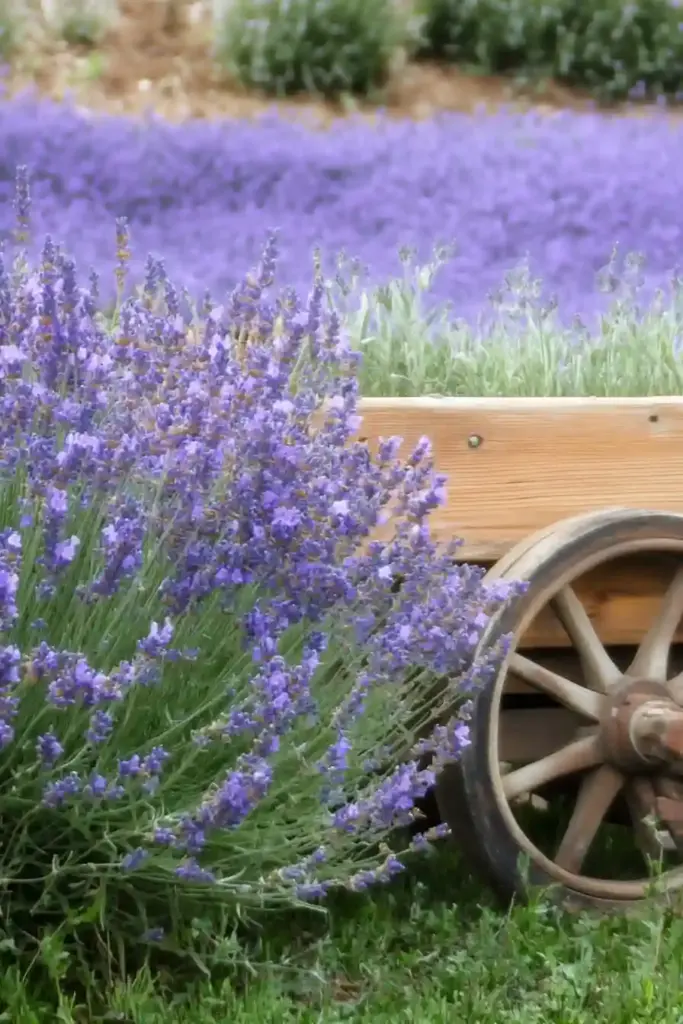
Lavender adds more than just a lovely scent to your garden—it brings texture, color, and an irresistible pull for pollinators like bees and butterflies. Known for its silvery foliage and spikes of purple-blue blooms, lavender is one of the best flowers for an English garden if you’re aiming for that timeless, serene vibe.
This sun-loving perennial thrives in well-drained, sandy or loamy soil and flourishes in USDA zones 5 through 9. Blooming from late spring into early summer, lavender is also perfect for dried arrangements, sachets, or homemade essential oils.
Quick Care Tips:
- Sunlight: Full sun
- Soil: Well-draining, slightly sandy or loamy
- Bonus: Highly drought-tolerant once established
Garden Tip: Plant lavender along paths or walkways to enjoy its fragrance every time you pass by—and to give it the airflow it loves.
🌸 3. Foxgloves – Vertical Elegance with Woodland Appeal
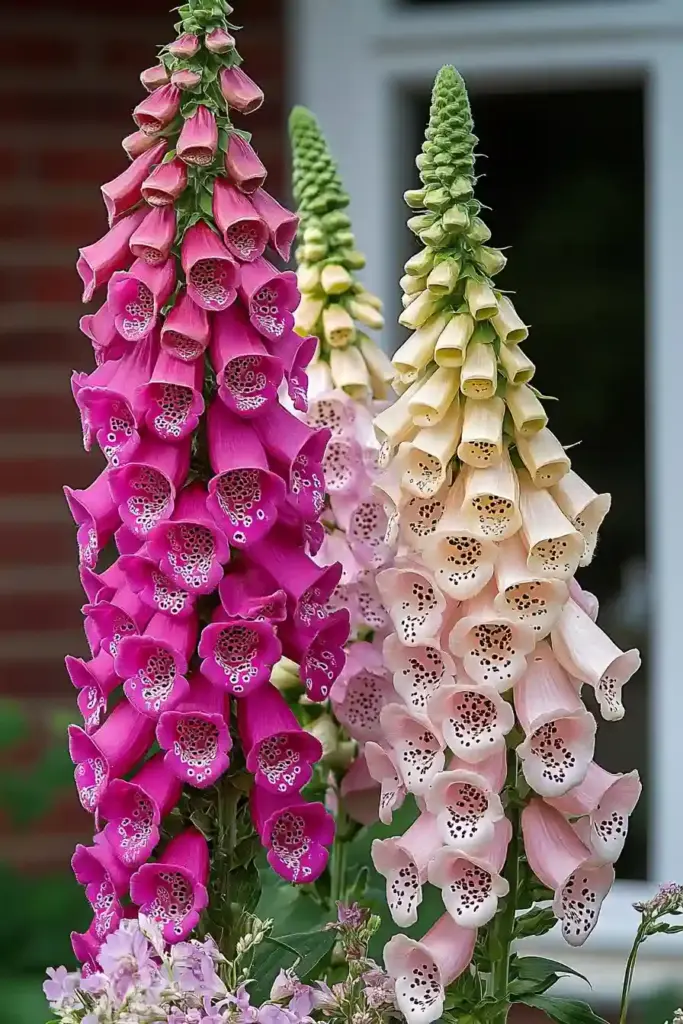
If you’re looking to add height and drama to your garden beds, foxgloves (Digitalis) are a standout choice. These towering beauties offer bell-shaped blooms in shades of white, pink, and purple, and they’re particularly suited for partially shaded areas—making them ideal for cottage gardens with dappled sunlight.
Foxgloves typically bloom in early summer and are biennial, meaning they produce foliage the first year and flowers the second. However, they often self-seed, giving you surprise pops of color year after year with minimal effort.
Their tall spires look stunning at the back of borders or along fences, and they also attract bees, helping pollinate the rest of your garden.
Quick Care Tips:
- Sunlight: Partial shade to full sun
- Soil: Moist, well-drained
- Maintenance: Allow seed heads to dry for self-seeding
⚠️ Note: While beautiful, foxgloves are toxic if ingested, so plant with care around pets or children.
💙 4. Delphiniums – Towering Spikes of Color
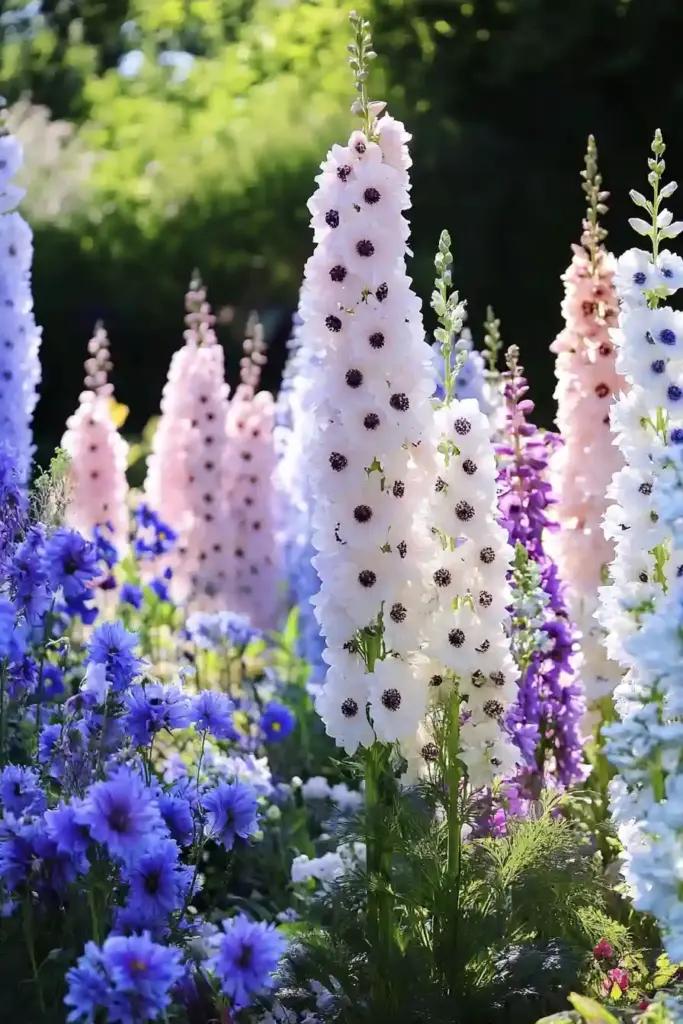
Delphiniums are show-stoppers in any English garden, known for their striking vertical spikes and rich hues of blue, purple, pink, and white. These perennials bloom in early to mid-summer and bring an air of elegance and grandeur, especially when planted in groups.
They prefer full sun but can handle a bit of afternoon shade in hotter climates. Delphiniums thrive in well-drained, slightly alkaline soil and benefit from regular watering, especially during dry spells. Because their tall flower stalks can be top-heavy, staking is often needed to keep them upright.
Pollinators like bees and butterflies love them—and so will you.
Quick Care Tips:
- Sunlight: Full sun (light afternoon shade in hot zones)
- Soil: Well-drained, slightly alkaline
- Maintenance: Stake stems, water consistently, cut back after blooming for a second flush
Design Tip: Plant them at the back of borders or against walls for structure and drama.
🌺 5. Hollyhocks – Cottage Garden Charm on Tall Stems
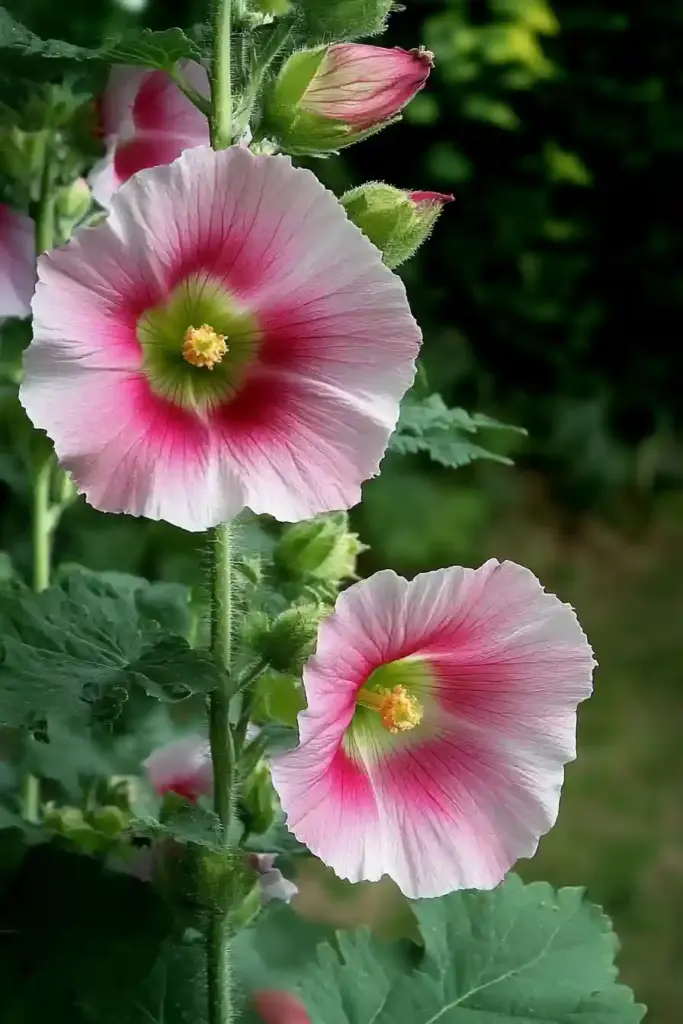
If you’re after that dreamy, old-fashioned cottage garden look, hollyhocks are a must. With towering stems reaching up to 8 feet and blooms in shades of pink, red, yellow, white, and purple, these vertical marvels bring cheerful color and height to borders and garden walls.
Hollyhocks are typically biennial or short-lived perennials, flowering in their second year. But with proper deadheading and a little patience, they’ll self-seed and keep your garden colorful for seasons to come.
These blooms are a pollinator magnet—especially for bees—and they thrive in full sun with well-drained, moderately fertile soil.
Quick Care Tips:
- Sunlight: Full sun
- Soil: Moderately fertile, well-drained
- Maintenance: Stake tall stems, deadhead for longer bloom time
Pro Tip: Plant hollyhocks against fences or walls to protect them from wind and to give your garden vertical interest.
🌷 6. Peonies – Lush Blooms with Minimal Fuss
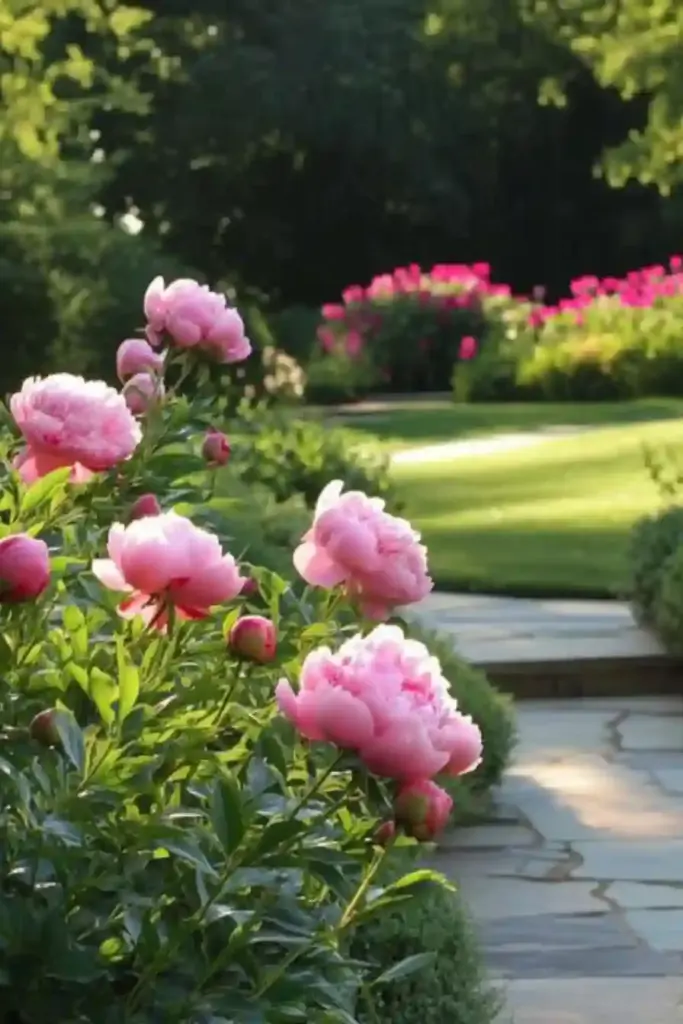
Peonies are a beloved staple in English gardens, known for their lush, full blooms and sweet fragrance. Available in romantic shades of white, blush pink, deep red, and even soft yellow, these perennials bring a touch of elegance and nostalgia to any planting scheme.
They bloom in late spring to early summer and require little maintenance once established. Peonies prefer full sun but can tolerate light shade, and they thrive in well-drained soil that stays moderately moist.
Because the large blooms can get heavy, especially after rain, a simple plant support or ring can help keep the stems upright.
Quick Care Tips:
- Sunlight: Full sun to light shade
- Soil: Well-drained, rich in organic matter
- Maintenance: Minimal—support heavy blooms and deadhead as needed
Garden Note: Once planted, peonies don’t like to be moved, so choose their location wisely—they’ll thank you with decades of blooms.
💜 7. Lupines – Vibrant Spikes for Pollinator Paradise
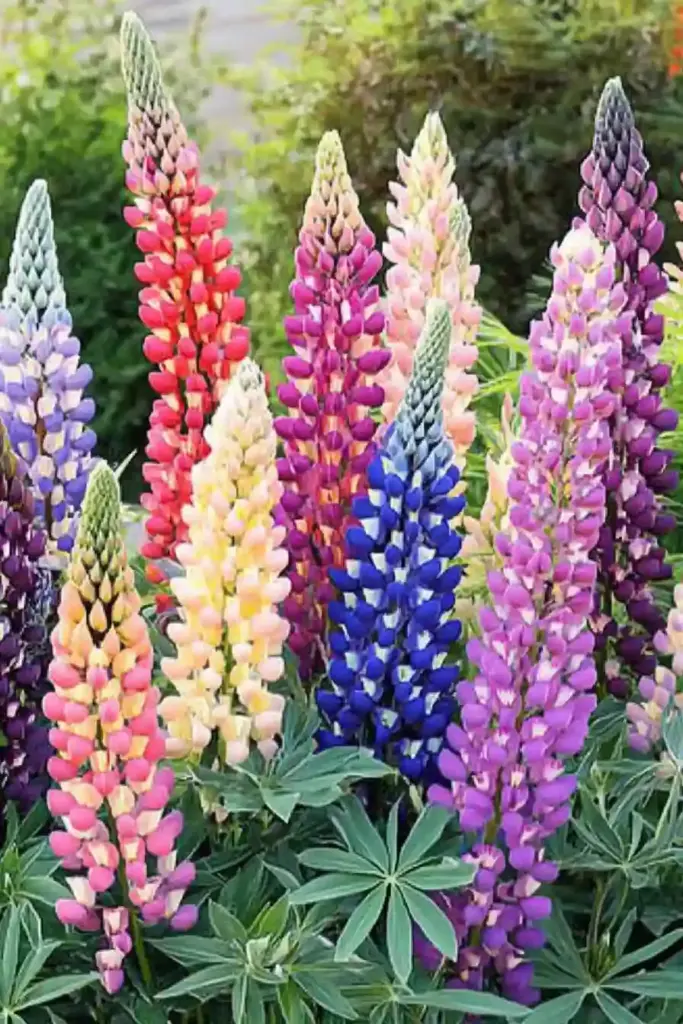
Lupines are a striking addition to any English garden, offering tall, cone-shaped clusters of flowers in vibrant hues like purple, pink, blue, and white. These perennials not only add architectural interest to your beds but also serve as pollinator magnets, drawing bees, butterflies, and other beneficial insects.
They bloom in late spring to early summer and thrive in full sun with well-drained soil. While they’re relatively low-maintenance, lupines do best in soil that’s slightly acidic and not overly rich—too much fertility can lead to more foliage than flowers.
Once established, they may self-seed, offering delightful surprises year after year.
Quick Care Tips:
- Sunlight: Full sun
- Soil: Well-drained, slightly acidic
- Maintenance: Deadhead spent blooms to encourage more flowers and prevent aggressive self-seeding
Fun Fact: Lupines are part of the legume family, meaning they actually help improve your soil by fixing nitrogen—win-win!
🌸 8. Sweet Peas – Delicate Climbers with Irresistible Fragrance
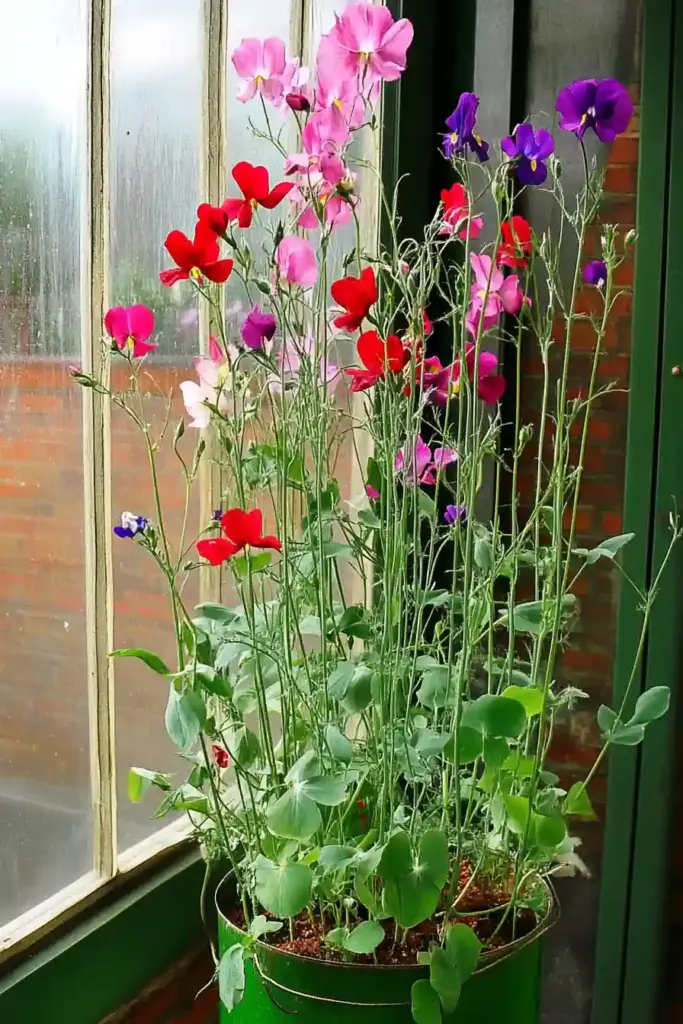
Few flowers capture the heart quite like sweet peas. These dainty climbers are cherished in English gardens for their soft, fluttery petals and divine fragrance. Available in a spectrum of pastel shades—including pink, purple, and white—sweet peas are perfect for trellises, arbors, or even woven through fences.
Sweet peas are annuals, so they complete their life cycle in a single growing season. Plant them in full sun with rich, well-drained soil, and keep the blooms coming by picking flowers regularly—doing so not only fills your home with scent but also encourages more blossoms.
Quick Care Tips:
- Sunlight: Full sun
- Soil: Fertile, well-drained, rich in organic matter
- Maintenance: Regular deadheading (or picking) keeps flowers blooming longer
Pro Tip: Soak seeds overnight before planting to improve germination, and provide support early so vines can climb as they grow.
🌼 9. English Daisies – Cheerful Ground-Level Color
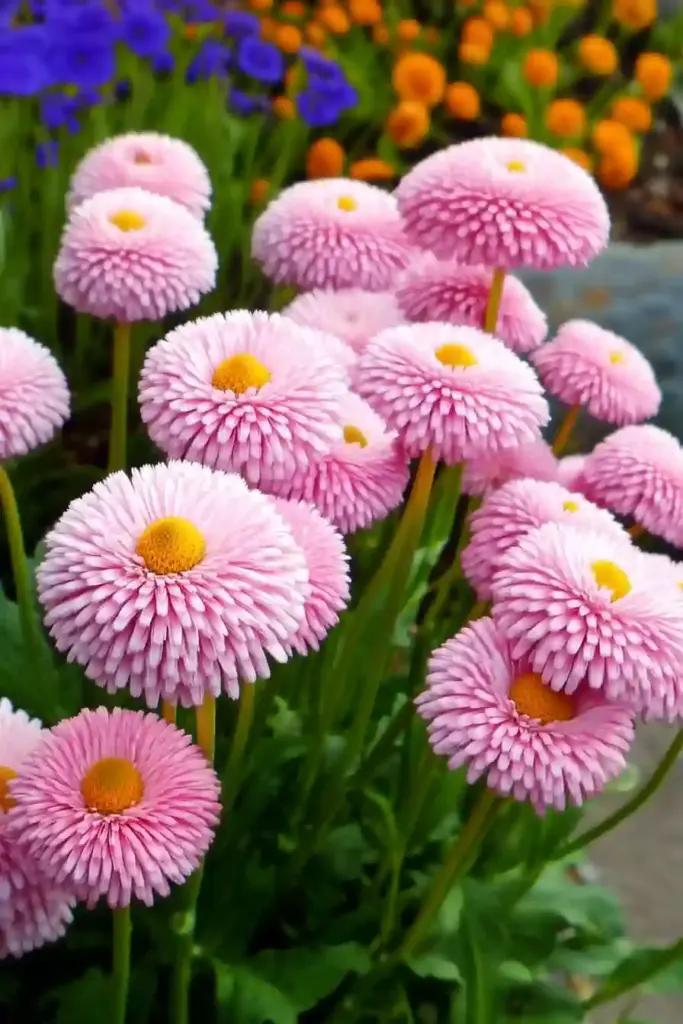
English daisies (Bellis perennis) may be small, but they bring big personality to your garden. These low-growing perennials are perfect for the front of borders, along pathways, or scattered through lawn-like plantings. With their button-like blooms in white, pink, or red, they add a sweet, informal touch to any English garden setup.
They’re especially valuable for their early bloom time—often starting in spring and lasting into early summer—making them a perfect way to wake up your garden after winter. English daisies thrive in full sun and well-drained soil and are hardy in zones 4 to 8.
Best of all? They require very little maintenance and return reliably each year.
Quick Care Tips:
- Sunlight: Full sun
- Soil: Well-drained
- Maintenance: Minimal; divide clumps every few years to maintain vigor
Design Tip: Pair them with taller perennials like foxglove or delphinium for a layered look that feels both wild and intentional.
💧 10. Hydrangeas – Classic Blooms with Season-Long Impact
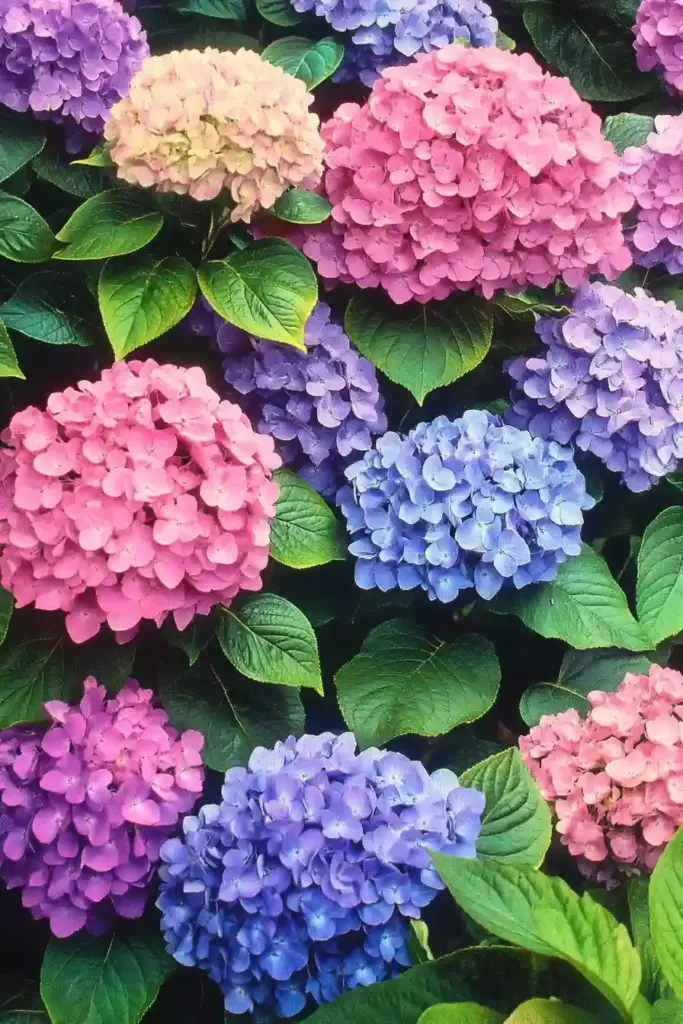
Hydrangeas are a true centerpiece in many English-style gardens, loved for their large, cloud-like flower heads and long bloom period—from late spring into early fall. These versatile shrubs come in a wide variety of colors, including white, pink, blue, and lavender—some even change color based on soil pH!
They prefer partial sun (especially in hotter climates) and need moist, well-drained soil enriched with organic matter. Hydrangeas can grow in both formal garden beds and more relaxed cottage-style borders, and their blooms are excellent for both fresh and dried arrangements.
Quick Care Tips:
- Sunlight: Partial shade to full sun (depending on variety and climate)
- Soil: Moist, well-drained; pH affects flower color in some types
- Maintenance: Prune according to variety; consistent watering is key
Soil Trick: For blue flowers, keep your soil acidic; for pink, add lime to raise the pH.
🌼 11. Coreopsis – Sunny Blooms That Keep on Giving
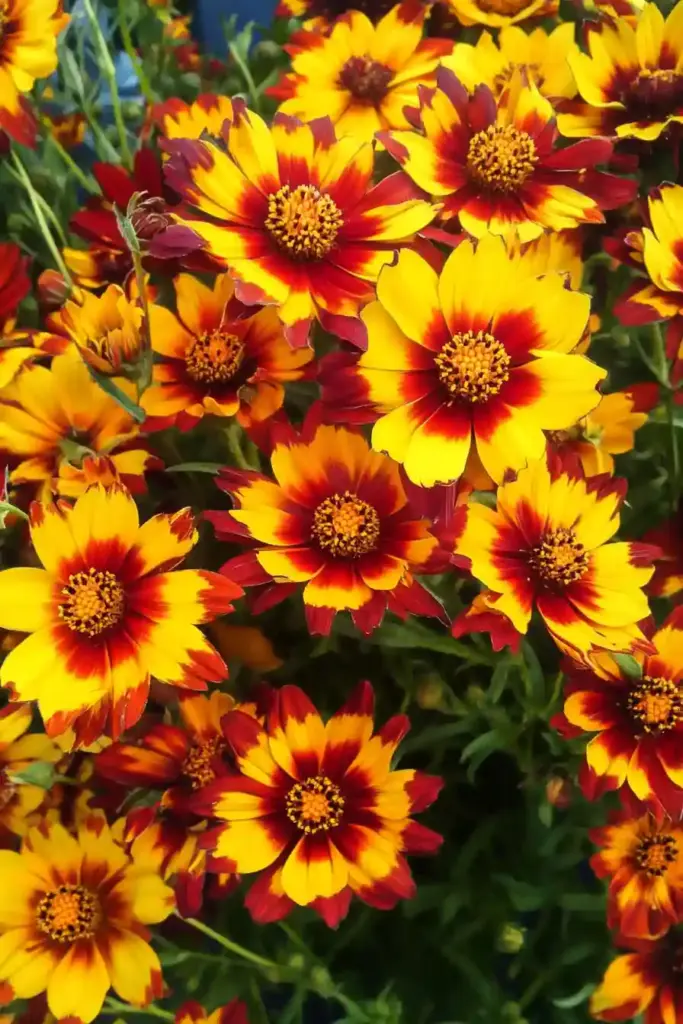
Coreopsis, sometimes called tickseed, may not be as iconic as roses or lavender, but it absolutely deserves a place in your English garden. With cheerful daisy-like flowers in shades of yellow, orange, pink, and red, coreopsis adds a splash of sunshine and blooms steadily from late spring into early fall.
This perennial is incredibly low-maintenance and thrives in full sun and well-drained soil. It’s also drought-tolerant once established, making it a great choice for gardeners who want lasting color with minimal fuss. Coreopsis is a favorite of bees and butterflies, making your garden both beautiful and beneficial.
Quick Care Tips:
- Sunlight: Full sun
- Soil: Well-drained (tolerant of poor soil too!)
- Maintenance: Deadhead regularly for continuous blooming
Bonus: Coreopsis is deer-resistant—perfect for rural or woodland-edge gardens.
🔴 12. Poppies – Bold Color with Delicate Grace
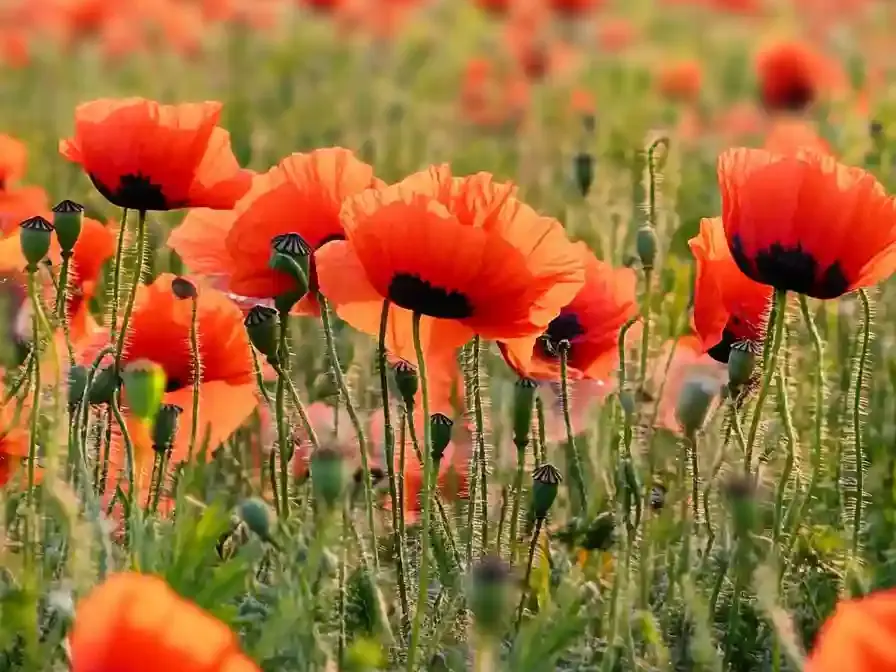
Poppies bring a burst of vibrant charm to English gardens, with their delicate, papery petals and jewel-toned hues. Available in reds, oranges, pinks, and whites, poppies typically bloom from late spring to early summer, creating a dreamy, meadow-like effect when massed together.
These annuals love full sun and prefer sandy or loamy, well-drained soil. While they don’t bloom for long, their fleeting beauty is worth it—and many varieties will self-seed, giving you lovely surprises year after year with little effort.
Quick Care Tips:
- Sunlight: Full sun
- Soil: Well-drained, sandy or loamy
- Maintenance: Let seed pods dry and scatter naturally or collect seeds for next year
Design Tip: Mix poppies with low-growing companions like English daisies or forget-me-nots for a soft, romantic border.
💙 13. Monkshood – Mysterious Beauty for Shady Corners
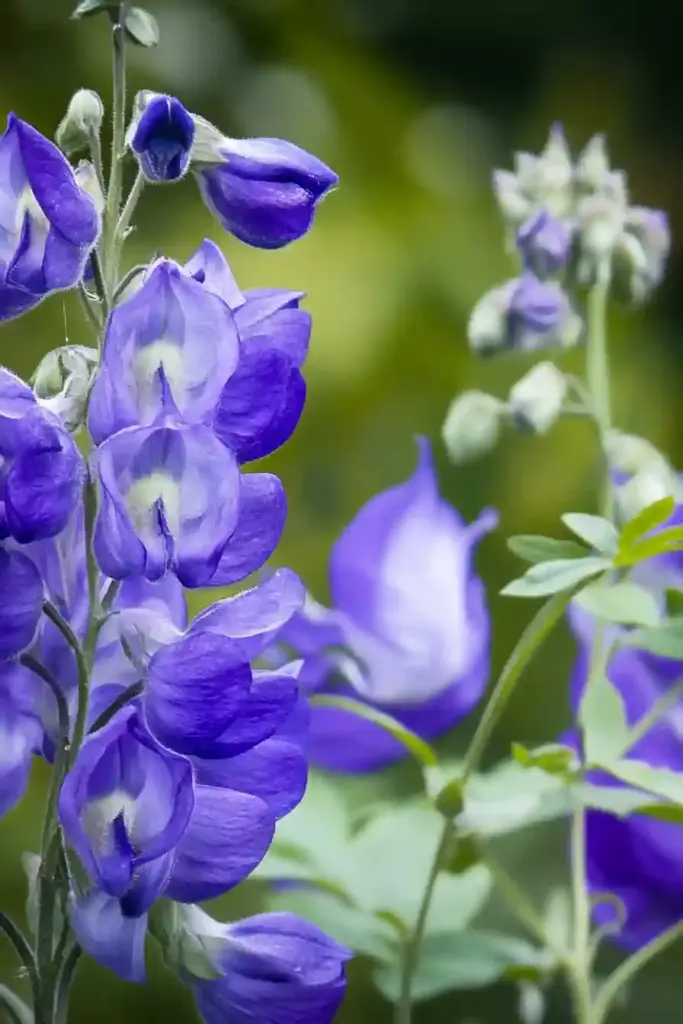
Monkshood (Aconitum) is a striking addition to any English garden, offering tall spires of deep blue to purple flowers that bloom from mid-summer into early fall. It thrives in cooler spots with partial shade, making it perfect for those shadier garden areas where other flowers might struggle.
This perennial prefers rich, moist, well-drained soil and is relatively low-maintenance once established. Its dramatic blooms resemble the hoods of medieval monks, giving it a mysterious, almost magical appearance. It’s especially valuable for extending color into the later part of the season.
Quick Care Tips:
- Sunlight: Partial to full shade
- Soil: Moist, fertile, and well-drained
- Maintenance: Minimal—just ensure consistent moisture
⚠️ Important Note: All parts of the monkshood plant are toxic if ingested. Handle with gloves and plant out of reach of children and pets.
💠 14. Forget-Me-Nots – Tiny Blooms with Timeless Sentiment
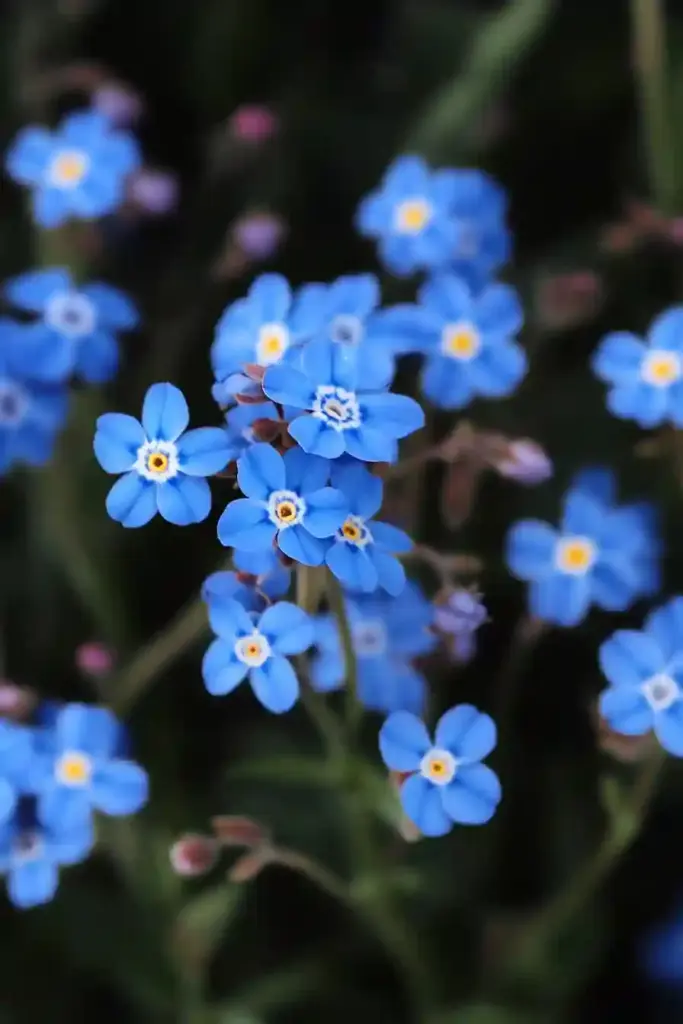
Forget-me-nots are small in size but mighty in charm. These beloved perennials (often treated as biennials) are perfect for weaving through borders or lining pathways in an English garden. Their sky-blue flowers, sometimes tinged with pink or white, create a dreamy, carpet-like effect when planted in clusters.
Blooming in spring and early summer, forget-me-nots thrive in partial to full sun and prefer moist, well-drained soil. They’re also self-seeding, meaning once you plant them, they’ll likely return year after year with little effort on your part.
Quick Care Tips:
- Sunlight: Partial to full sun
- Soil: Moist, well-drained
- Maintenance: Light deadheading; let some go to seed for natural replanting
Garden Tip: Pair them with tulips or daffodils for a soft, springtime underplanting.
🌿 Conclusion: Bring the Romance of an English Garden to Life
Creating an English garden is about more than just planting flowers—it’s about cultivating an atmosphere of relaxed beauty, soft color, and gentle fragrance. Whether you’re drawn to the towering elegance of delphiniums, the timeless charm of roses, or the cheerful simplicity of daisies, these 14 classic blooms offer the perfect starting point.
With a mix of perennials, biennials, and annuals, you can build a garden that evolves beautifully throughout the seasons and welcomes pollinators with open petals. Use the blooms on this list as inspiration to craft a space that feels lush, welcoming, and uniquely your own.
So, grab your gardening gloves, and let the timeless charm of these best flowers for an English garden transform your outdoor space into something magical.

